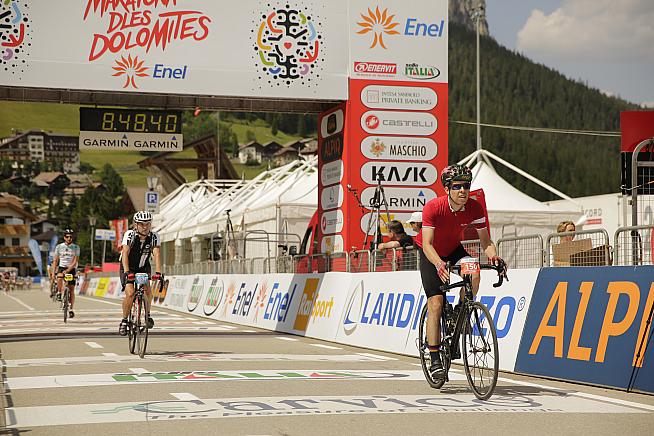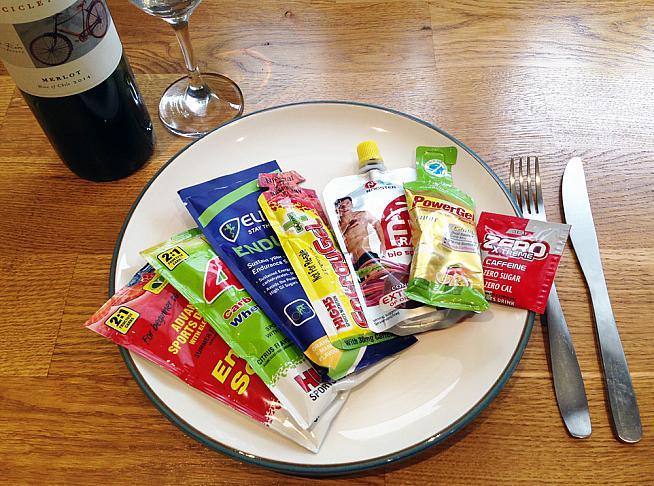Participating in a Gran Fondo, a long-distance cycling event, requires finding the right balance between pushing yourself and conserving energy. These rides can span over 160 kilometres (100 miles) and involve challenging terrains.
To successfully complete a Gran Fondo and enjoy the experience, pacing yourself becomes crucial. Here are some strategies to help you find the right balance throughout the event.
1. Understand the Gran Fondo Challenge
Before diving into pacing strategies, it's essential to grasp the unique challenges of a Gran Fondo. These events are not traditional races, but rather endurance rides that test both physical and mental stamina. Knowing the distance, terrain, and potential obstacles will help you set realistic expectations and plan your pacing accordingly. Make sure you check the course details and main segments through Strava or a similar platform to know what to expect.

Once you have identified the course, approximately 2 or 3 weeks prior to the Gran Fondo, you can simulate the event through training. Opt for a course that mirrors or closely resembles a Gran Fondo, covering the same distance. This approach not only helps you grasp the challenge but also serves as excellent preparation for the event.
2. Start Slowly, Finish Strong
When the event kicks off, it's easy to get caught up in the excitement and adrenaline, causing you to push harder than necessary. However, starting at a sustainable pace is key to conserving energy for the long haul. Begin with a comfortable effort level, allowing your muscles to warm up and adapt to the demands of the ride. As the kilometres add up, gradually increase your effort and find your rhythm.
However, it's essential to consider the importance of riding with a peloton that maintains an optimal speed. Finding a group that isn't excessively fast or slow can greatly benefit you, as drafting behind a pack significantly increases your speed compared to riding alone.
If you've entered with a group of clubmates or friends you'll have a ready-made peloton. But even if you enter solo, you're likely to find yourself falling into a group with other riders going at a similar pace - join together (if they're up for it!) and help share the load.
3. Use a Heart Rate Monitor or Power Meter
Monitoring your heart rate or power output during a Gran Fondo provides valuable feedback on your exertion levels. Investing in a heart rate monitor or power meter can help you gauge your effort and ensure you stay within your desired intensity zone. Aim to maintain a sustainable heart rate or power output throughout the ride, making adjustments as needed during climbs and descents.
The highest levels of energy expenditure in your body are typically caused by intense accelerations or when you exceed your threshold. If your goal is to conserve energy, it is advisable to minimise accelerations and strive for a smooth and steady ride, while avoiding surpassing your threshold. If you don't know your threshold, you can calculate your threshold power or estimate heart rate zones here.
4. Pace Yourself on Climbs
As discussed, you can conserve energy by avoiding going above threshold and riding as smoothly as you can. This is especially true for climbs, as they are often a significant aspect of Gran Fondos, and how you approach them can greatly impact your overall performance. Rather than attacking climbs at full force, it's wise to adopt a steady and consistent pace. Avoid going into the red zone too early, as it can lead to burnout later in the ride.
Find a cadence and effort level that you can sustain, allowing you to conquer the ascent while conserving energy for the rest of the event. For non-professional riders, a cadence of around +-85rpm seems to be the most efficient for longer hills. However it is important to work on cadence while you are training for a gran fondo, so make sure you implement low and high cadence intervals so that on the day you are comfortable with the cadence.
5. Take Advantage of Descents and Flats
While climbs demand a controlled pace, descents and flat sections present an opportunity to recover and potentially catch up on time. Utilize these segments to your advantage by allowing yourself a moment of relaxation, replenishing energy, staying hydrated, and consuming some food.
Leverage the momentum by maintaining a steady yet comfortable speed. Adopt a safe and aerodynamic position that allows you to stop pedalling and conserve energy. However, it's important to exercise caution and ride within your skill level to prioritize safety.
6. Fuel and Hydrate Wisely
Proper nutrition and hydration are vital for maintaining energy levels and avoiding fatigue during a long-distance cycling event. Plan your nutrition strategy in advance, including regular intake of carbohydrates and electrolytes. Take advantage of rest stops to refuel and hydrate, ensuring you stay adequately fueled throughout the ride. Experiment with different energy gels, bars, and drinks during your training to find what works best for you.

To our coaching clients, we recommend consuming solid food for the first 60-70% of the event, unless you are at a critical point earlier. As for solid food, you can make very small pieces of bread with ham/cheese or a nutella/peanut butter or even rice cakes covered in aluminium foil.
Then after 60-70% of the race distance, we recommend taking more sugar cabs like gels and sugary drinks. This is because relying solely on sugar for energy can lead to rapid depletion and a subsequent drop in performance.
By reducing sugar intake during aerobic exercise, our bodies are encouraged to tap into alternative energy sources, such as stored fats. This shift allows for a more sustained and efficient energy supply, leading to improved endurance. This holds particularly true for extended events like Gran Fondo, where exercise often persists for more than 4 hours, necessitating a reliable and sustainable energy source.
It's important to adopt this fueling strategy only if you have prior training experience with it. If you're not accustomed to this approach, it may not be effective for you.
7. Listen to Your Body
Throughout the Gran Fondo, it's crucial to listen to your body's signals. Pay attention to any signs of fatigue, dehydration, or discomfort. Ignoring these warning signs can lead to performance decline or even injury. Adjust your pace accordingly, take short breaks if needed, and don't hesitate to seek assistance from event organizers or medical staff if necessary.
Enjoy the Ride!
Achieving the perfect equilibrium between pushing your limits and conserving energy holds the utmost importance when it comes to conquering a Gran Fondo. Embracing these strategies and allowing the experience to fine-tune your pacing skills will undoubtedly enhance your enjoyment of the Gran Fondo journey.
So, pedal forth with enthusiasm, embrace the challenges, and relish the exhilaration as you triumphantly approach the finish line.
Should you ever find yourself feeling overwhelmed or in need of assistance with your preparation, we are here to help through our solutions at ProCyclingCoaching.
0 Comments





